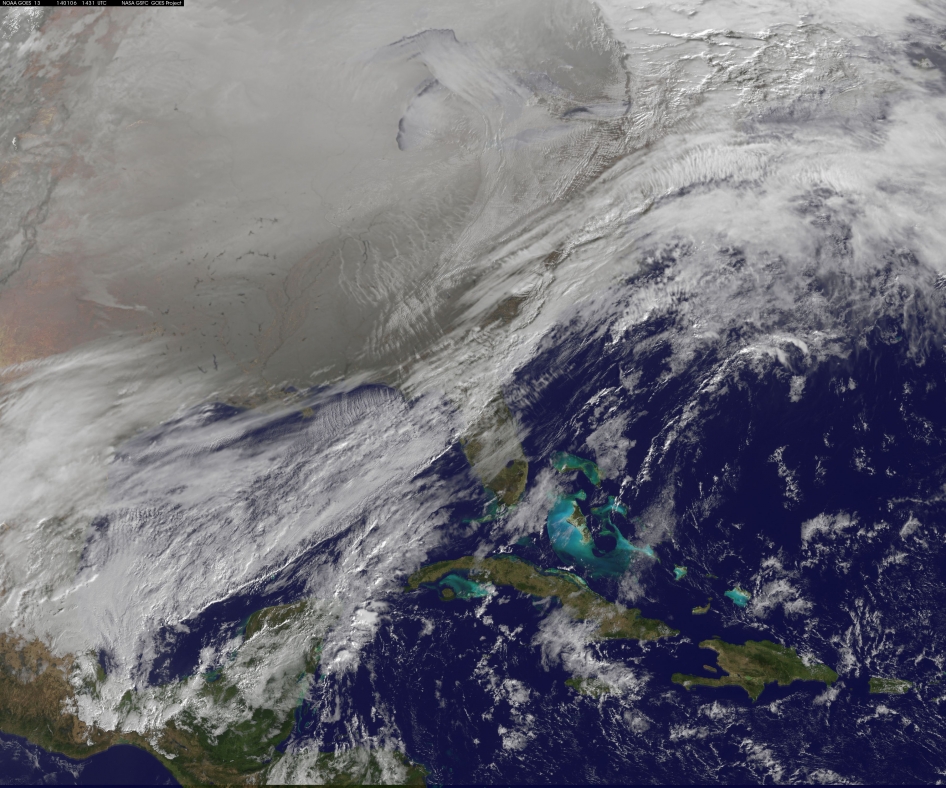Yes, we were cold, but others were warm.
Now We Know What a Polar Vortex Is, but Do We?
If someone had told me a couple of weeks ago that "polar vortex" (also called a "polar low") would become a household name, I would have thought they were crazy. But for a few days this past week, with its record-breaking deep freeze* over large swaths of the Midwest, Northeast and even parts of the South, the "polar vortex" was a main topic of conversation around town and topped many a headline and newscast. A Google search on "polar vortex" brought me 17 million hits. It was quite an event.
Now, as the polar vortex weakens and moves on toward Europe -- and those of us who experienced the system thankfully look forward to balmier weather this weekend, if we are so lucky -- let's pause to look back on just how much the vortex torqued temperatures over our part of the globe.
Some Got It Cold, Some Got It Hot
The graphic below shows the global distribution of temperature anomalies (the temperature excursion from the average for that day and location) on January 7. Note the dark blue and purple colors blanketing the eastern half of the United States -- it was cold.
But there's another feature of this figure that has perhaps not been stressed enough. Note the green, yellow, and even red colors over Alaska, eastern Canada, and northern Europe. While many of us Americans were in a deep freeze, our neighbors to the north as well as in Europe were, at least figuratively, baking in the oven.
 This map of the temperature anomaly for January 7, 2014 shows colder (blue to black) than normal temperatures over much of the eastern United States. Also note the warmer-than-normal temperatures (red) over Alaska, northeastern Canada and Siberia. (Source: NOAA's Earth System Research Laboratory) |
It's the Weather, Stupid
The weather this past week wasn't just about cold temperatures; it was about cold temperatures in one place and warm ones in another.
Despite what some, like the Donald, Rush Limbaugh, and others have been saying, the event we experienced last week wasn't a sign of global cooling. It was indicative of heat being redistributed. And that's not unusual; it's what the atmosphere does.
Much of the weather we experience -- the rain and the cold and the hot and the dry -- is generated by the atmosphere acting as a heat engine, moving heat from the tropics to the polar regions. The polar vortex is simply an example of the atmosphere working very hard and fast at that redistribution thing. The good news, at least so far, is that this type of polar vortex excursion is not the norm. Some speculate that global warming will make them more common; see here, here and here, for example. Let's hope they're wrong.
___________________
End Note
* Low temperature records were broken in various places (e.g., New York City, Maine, Chicago,) from January 5 through January 7 but there were no all-time record lows.
Further Reading
Polar Vortex Enters Northern U.S.
NASA, January 6, 2014
What's going on with the Polar Vortex?
NOAA, January 6, 2014
Keep up with TheGreenGrok | Find us on Facebook
